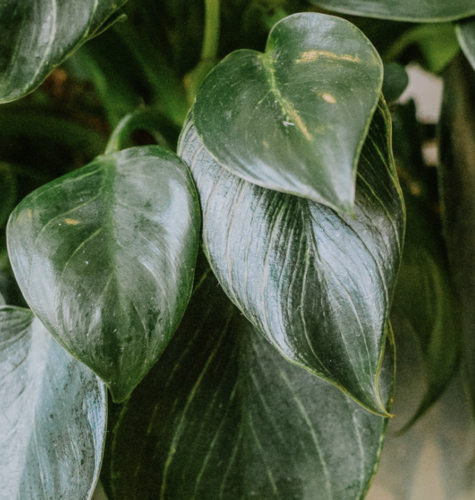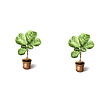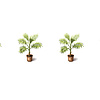How to Plant Asparagus
Asparagus differs from most vegetables in that it produces a harvestable crop very early in the spring. They bare young spears that poke through the earth, providing a striking contrast against the stark black soil. Tall, attractive ferns with bright red berries are produced later. Asparagus grows best in cool northern climates.
Before You Plant:
Clear the area of all vegetation. Keeping weeds at bay will extend the life of your asparagus bed. Do not plant other perennials nearby. Cultivate the soil as deeply as possible and work in a generous amount of composted manure. Asparagus needs a good supply of phosphorus, so add one handful of bonemeal per plant before planting and work it lightly into the soil.
How Much To Plant:
1. Each plant will yield half a dozen or more spears during the harvest period. Expect a limited harvest in the first season from one-year-old crowns, and will reap more each following year.
2. An established bed will last from 15-20 years, and even longer if weeds are kept under control.
When To Plant:
Plant in early spring. Strong 1-2-year-old crowns with at least ten roots are best. 1-2-year-old roots are best. Remember, though, to take only a limited harvest from one-year-old crowns for the first year after planting. Planting asparagus from seed is not recommended as it takes 3-4 years to receive your first crop.
Planting Methods:
1. Dig a trench 6in deep, spread roots apart and cover with no more than 2 in of well-firmed soil. During the second season as the plants grow, gradually fill in the trench until its level with the garden.
2. If in a row, space a plant every 12in along trenches that are 4ft apart.
3. If in a bed, allow 2ft between plants.
Harvesting:
1. Harvesting may be started in the year following planting: do not pick any spears in the year that you plant.
2. Excessive harvesting in any season may reduce your yield the following year. In the first harvest year, cut only for two to three weeks. In the second cutting year, harvest for three to four weeks, and in the following seasons, from four to six weeks.
3. Allow some spears to produce mature leaves so that the plant can establish reserved for the next year’s crop.
4. Judge readiness by width rather than height. Stalks, the thickness of a finger are tastier than thinner ones. Harvest in the morning or ½ hour before cooking. Avoid mid-afternoon harvesting.
5. Twist or cut stalks with a sharp knife, just below ground level. If stalks do not cut easily, they are likely over mature. Take care not to damage young spears which have not yet poked through the ground.
6. Never cut the ferns after harvesting; allow them to die back on their own in the fall. Ferns should be left standing over the winter to trap snow around the plants, providing moisture and insulating the roots from cold. Ferns can be removed in the spring.
Growing Tips:
-Feed new plants with a Plant Prod 10-52-10, once a week for the first three weeks after transplanting to help with establishing a strong root system.
-Keeping the asparagus bed free of weeds will add years to its life.
-Remember to give asparagus a heavy watering in October. You will be rewarded with an earlier crop the following spring.

 Stylist Appointments
Stylist Appointments
 Make & Take Workshops
Make & Take Workshops
 Private Plant Workshops for Groups
Private Plant Workshops for Groups
 Corporate Planting Service
Corporate Planting Service
 Commercial Landscaper Application
Commercial Landscaper Application


 Rick's Top Products
Rick's Top Products

 All Jewelry
All Jewelry
 Handbags & Wallets
Handbags & Wallets

 Summer Drink Essentials
Summer Drink Essentials
 All Oils & Vinegars
All Oils & Vinegars






